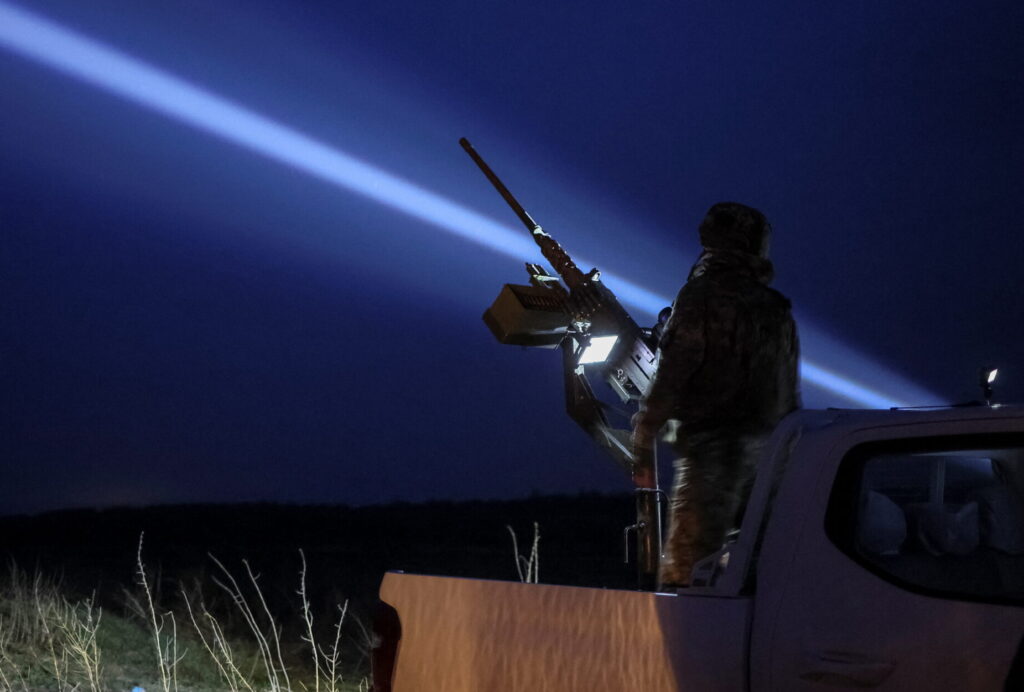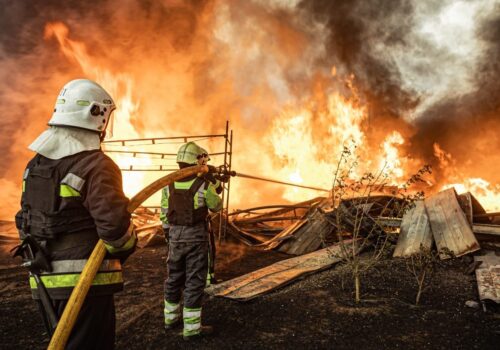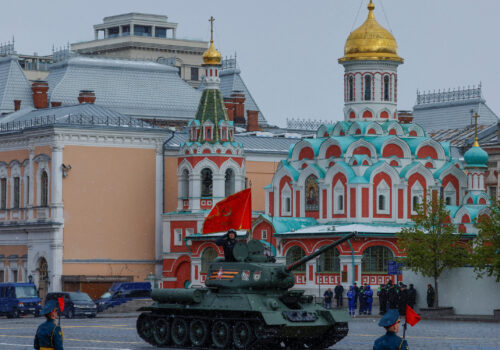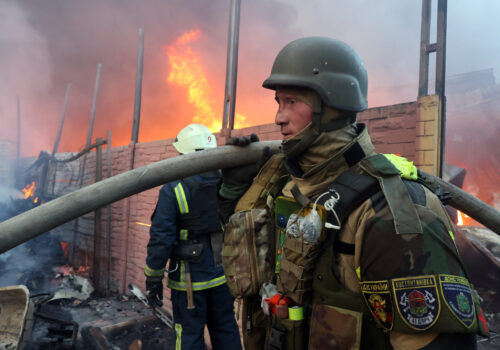The past few months have been a particularly challenging period for Ukraine’s overstretched air defense units. With the country suffering from mounting shortages of interceptor missiles, Russia has exploited growing gaps in Ukraine’s defenses to bomb cities and vital civilian infrastructure with deadly frequency. These escalating attacks have led to renewed calls from Ukrainian President Volodymyr Zelenskyy for Kyiv’s partners to provide the country with more air defense systems in order to safeguard lives and prevent the collapse of basic municipal services.
While most attention has focused on the many Russian ballistic and cruise missiles that have reached their targets, Ukraine has actually managed to shoot down a strikingly high number of Russian kamikaze drones. On May 13, the Wall Street Journal reported that Ukraine had intercepted 82 percent of kamikaze drones over the past six months, just one percentage point lower than the total for the previous half-year period. This figure is even more remarkable given that Russia typically launches waves of drones as part of complex attacks that also feature a range of different missiles.
Stay updated
As the world watches the Russian invasion of Ukraine unfold, UkraineAlert delivers the best Atlantic Council expert insight and analysis on Ukraine twice a week directly to your inbox.
Many in the Ukrainian media and beyond have been quick to publicize the numerous improvised and ingenious measures adopted by Ukraine to counter Russia’s drone attacks. These steps have included the establishment of mobile teams using older anti-aircraft guns mounted on trucks to shoot down drones at a fraction of the cost of more sophisticated air defense systems. In spring 2024, US General James Hecker, head of US Air Forces in Europe, described how Ukrainians had set up a detection network using cheap cell phones on poles to warn of incoming drones. German-supplied Gepard systems have also proved extremely cost-effective drone destroyers, as have newer systems such as the US-made VAMPIRE.
While Ukraine’s high interception rates are impressive, the threat posed by this form of aerial warfare remains grave and continues to evolve. Even when the majority of drones are shot down, those that do reach their targets often cause significant damage and loss of life. Indeed, when it comes to air defenses, even a 99 percent success rate is not good enough. While it is better to shoot down drones than allow them to hit their targets, interceptions can also be costly, with debris from falling drones frequently causing death and destruction in a terrifyingly random manner.
Eurasia Center events

Russia’s fleet of kamikaze drones is growing. During the first year of the invasion, the Kremlin organized regular deliveries of Shahed kamikadze drones from Iran. Moscow has since set up domestic production facilities and is now far less dependent on Tehran. This is allowing Russia to scale up its own output, making it possible to increase the frequency of attacks. As production continues to expand, more and more drones will be launched against targets across Ukraine. These increasing quantities of drones will deplete Ukraine’s anti-drone ammunition and could potentially overwhelm the country’s limited defenses.
In addition to producing a domestic version of Iran’s Shahed drone, Russia is also experimenting with a range of modifications. These efforts have included spraying drones to reduce detection and adding cameras to stream video footage of drone flights back to Russian operators. Meanwhile, Russia reportedly continues to receive new drone models from the country’s Iranian partners.
While these upgraded models and modifications have so far failed to make a big difference to Russia’s air offensive, they do serve as a reminder that this is a war of innovation and underline the need for Ukraine to maintain the highest degree of vigilance. Throughout the invasion of Ukraine, the Russian military has demonstrated its ability to learn from earlier mistakes and incorporate new technologies. Ukrainians cannot afford to assume that today’s defenses will necessarily be sufficient to stop tomorrow’s drones.
An additional drone-related headache for Ukrainian military planners is the need to spread air defenses across as wide an area as possible. While mobile anti-drone teams have proved relatively effective, they are only one part of a much wider network of air defenses centered around Ukraine’s major cities and key infrastructure sites. Given that air defenses are desperately needed to support military operations on the battlefield, guarding against frequent kamikaze drone attacks far away from the front lines weakens the Ukrainian war effort.
As long as Russia continues to build and deploy kamikaze drones, they will remain a significant problem for Ukraine. The country’s partners can help address this problem in two ways. They can supply more air defense systems, especially models that are designed to intercept slow-moving but plentiful drones rather than far faster missiles. They can also support Ukraine’s efforts to strike targets such as air bases, production facilities, and drone storage sites inside Russia. Destroying Russian drones before they are launched is the most effective way to protect Ukraine from further bombardment.
Marcel Plichta is a PhD candidate at the University of St Andrews and former analyst at the US Department of Defense. He has written on the use of drones in the Russian invasion of Ukraine for the Atlantic Council, the Telegraph, and the Spectator.
Further reading
The views expressed in UkraineAlert are solely those of the authors and do not necessarily reflect the views of the Atlantic Council, its staff, or its supporters.

The Eurasia Center’s mission is to enhance transatlantic cooperation in promoting stability, democratic values and prosperity in Eurasia, from Eastern Europe and Turkey in the West to the Caucasus, Russia and Central Asia in the East.
Follow us on social media
and support our work
Image: A Ukrainian serviceman from anti-drone mobile air defence unit operates a Browning machine gun at his position, amid Russia's attack on Ukraine, in Chernihiv region, Ukraine March 28, 2024. (REUTERS/Gleb Garanich)




